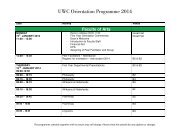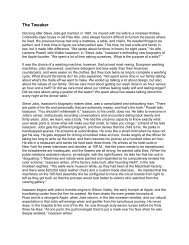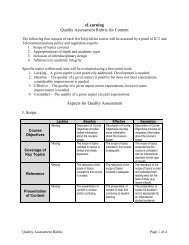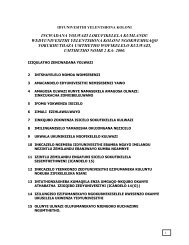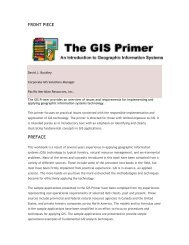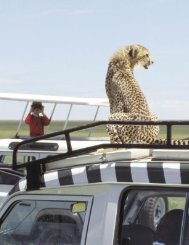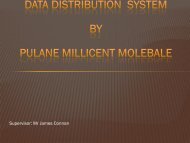Ecosystem Guidelines for Environmental Assessment
Ecosystem Guidelines for Environmental Assessment
Ecosystem Guidelines for Environmental Assessment
You also want an ePaper? Increase the reach of your titles
YUMPU automatically turns print PDFs into web optimized ePapers that Google loves.
MAINLAND THICKET<br />
INCORPORATING THICKET, VALLEY THICKET & ARID THICKET<br />
MAINLAND THICKET<br />
ECOSYSTEMS<br />
MAINLAND THICKET<br />
Doug Euston-Brown<br />
What are the key ecological “drivers” in terms of<br />
maintaining ecosystem function, pattern or structure<br />
Herbivory is an integral part of thicket evolution and there<strong>for</strong>e function, pattern and structure.<br />
Thicket represents the backbone resource <strong>for</strong> browsing animals in Southern Africa: it is drought tolerant,<br />
reliable and enduring. Being further from the savannas and associated animals, thicket in the Western<br />
Cape may have been less influenced by herbivory than in the Eastern Cape. However, many animals<br />
such as kudu continue to make seasonal east-west migrations to escape winter droughts in the Eastern<br />
Cape and summer droughts in the Western Cape.<br />
Seed dispersal by animals (especially birds) results in the development of bush clumps around<br />
solitary perch sites such as pioneer trees and termite mounds. Bush clumps enlarge and, depending<br />
on local site conditions, eventually coalesce into dense thickets.<br />
Fires are important in maintaining thicket boundaries when they occur in the adjacent grassland and<br />
fynbos biomes. Thicket mosaics tend to develop in these boundary areas. Solid or uni<strong>for</strong>m thicket tends<br />
to be associated with topographically-determined fire refugia - such as deep kloofs, cliffs and scree<br />
- or climatically-determined fire refugia, i.e. areas too arid to support flammable vegetation. Heavy<br />
grazing can reduce fuel loads, which can retard the spread of fire and allow the establishment and<br />
spread of thicket clumps.<br />
Climate variability - droughts, floods and heat waves - has little impact on thicket vegetation.<br />
Relative to the other biomes in the Western Cape, thicket is probably the most resilient to climate<br />
change. Thicket is there<strong>for</strong>e critically important <strong>for</strong> the health and persistence of broader ecosystems.<br />
Arid Thicket is probably the most resilient to climate change, but is most vulnerable to disturbance<br />
resulting from heavy browsing or grazing.<br />
Winter versus summer rainfall ratios (≥ 20% annual rain in winter, April-August) strongly influence<br />
the distribution of thicket. The western limit of Mainland Thicket correlates closely with the transition<br />
to a higher proportion of winter rainfall, and dominance by the Fynbos or Succulent Karoo biomes.<br />
Coastal Thicket only penetrates inland in the Western Cape where the maritime influence on the climate<br />
ameliorates summer drought.<br />
Topography, geology and soil type also drive the distribution of thicket vegetation. Mainland Thicket<br />
in the Western Cape is usually associated with the base of, or valleys within, the Cape Fold Mountains.<br />
This correlates with a transition to a more arid climate and a change from sandstone to non-sandstone<br />
soils. Thus, thicket acts as a buffer or barrier between the Fynbos Biome on the mountains and the<br />
Succulent Karoo Biome on the drier hills and flats.<br />
What are the key issues, vulnerabilities and threats<br />
Overgrazing, especially by goats, in combination with drought has led to the demise of spekboom<br />
Portulacaria afra. Spekboom is an essential component of thicket, especially in the Western Cape, where<br />
it is often the dominant species at the base of north-facing sandstone slopes. It appears to be a pioneer<br />
species that may facilitate the establishment of other thicket species. Once spekboom is lost, many<br />
other thicket species also die, and the slope becomes barren and prone to erosion. Such areas do not<br />
JAN VLOK<br />
62 : MAINLAND THICKET ECOSYSTEMS



